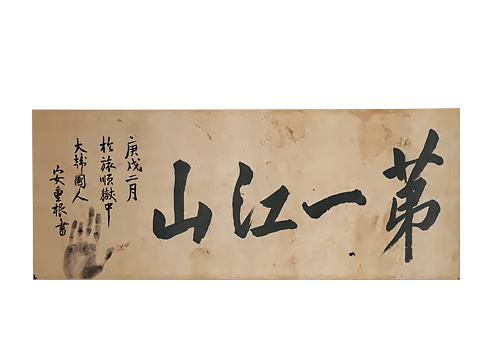The Modernization and the National Movement Room houses Silhak (Practical Learning) literature (the germination of modern thought during the late Joseon Dynasty), as well as Western astronomy and geographical literature, world maps from China, and Korean maps, giving a glance at the changes that occurred in the prevailing Joseon world view. Other items on display shed light on the Korean people’s national movement that emerged in response to foreign aggression in the late 19th century.
Permanent Exhibition
-
- Exhibition
- Permanent Exhibition
- Modernization and National Movement Hall
Category Title
- The Introduction of Western Science and the Development of Silhak (Korean Practical Learning)
- The Development of Astronomy and a Geography, and a World View Change
- The Development of Korean Geography and the Promotion of Patriotism
- National Isolation Policy and the Rejection of Heterodoxy
- Foreign Aggression and the Enlightenment Movement
- Japanese Colonial Rule and the Independence Movement
Josen society, having long adhered to isolation policies, was forced by Japan to conclude the Byeongjasuhojoyak (Korea-Japan Trade Treaty) in 1876, thus opening itself to the world. In the wake of this treaty Joseon shed its isolation policies, accepted the knowledge and innovations of advanced foreign civilizations, and began to modernize. Thus, the Joseon government sent emissaries and groups of observers to the Chinese Qing Dynasty and Japan to acquire advanced knowledge in the military, administrative, scientific, and technological fields. However, some of the reformists who traveled to foreign nations were influenced by the advanced civilizations to such a broad extent that they sought to negate the conventional feudal order and push reform, as well as disseminate enlightenment thinking and raise public awareness through the news media. However, reformist efforts to build a modern nation did not lead to a popular revolution, and ultimately failed to resist foreign aggression.
An Jung-geun's Japan Resistance Movement
This museum houses the handwriting legacy left by the independence activist An Jung-geun who, towards the end of Old Korea, fiercely resisted Japanese aggression and displayed ardent patriotism. In 1909, An Jung-geun pledged to save the nation and assassinate Ito Hirobumi, the prime mover of Japan's aggression, by cutting his finger, as did a group of twelve comrades. On October 26, 1909, An shot Ito Hirobumi to death at Harbin Station in Manchuria. He attempted to halt Japan's aggression policies and establish peace in the Orient. He insisted before the tribunal that he should be treated as a prisoner of war since°™as the lieutenant general of Korea's independence troops°™he had assassinated the enemy's leader. His theory for peace in the Orient depended on Japan giving up its policies of aggression in Korea and Manchuria, and that together the three East Asian nations should repel the Western powers and promote enlightenment, thus creating peace with the world.





